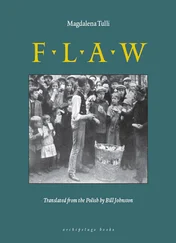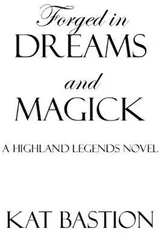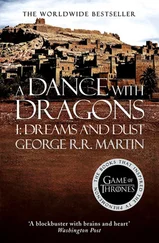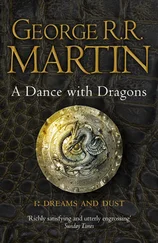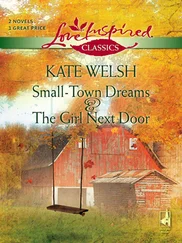No one knows where sorrow comes from in a city. It has no foundations; it is not built of bricks or screwed together from threaded pipes; it does not flow through electric cables nor is it brought by cargo trains. Sorrow drifts amongst the apartment buildings like a fine mist that the wind blows unevenly across the streets, squares and courtyards. There are long streets and short ones, there are broad ones and narrow ones. The gray of some bears a trace of ochre while others are bluish from the sidewalks to the roof tiles. Each of them has its own peculiar shade of sorrow. Those it has liberally coated and those it has marked with only a barely perceptible shadow run together, intersect and separate. Their length, breadth and angles of intersection influence the circulation of sorrow. Its volume and kind change every day in the city just like the weather. Here and there a small point of joy appears and a zone of joy begins to expand in wedges down streets enveloped in sorrow; its advance parts pass over the roofs of buildings like an atmospheric front. There are streets on which the flags of the sidewalk are loose and there is always a smell of cabbage and bacon while on Saturdays noise and music can be heard on every corner. Each Monday the place is filled with a dreary silence interrupted at infrequent moments by the slamming of doors and the sound of hoarse voices.
From a certain point of view sorrow might be regarded as an alternative form of enthusiasm which from the beginning was included in the plans for the city but — like everything in the world — proved not sufficiently durable and sooner or later had to turn into its opposite. Sorrow is what enthusiasm becomes when its explosion passes its highest point, after which implosion inevitably follows.
These were the discoveries of the inhabitants as they sought new rules in feverish desperation. For without rules life is lived in an intolerable uncertainty. Rules too are of little help. They do not enable one to touch either enthusiasm or sorrow, much less the causes of their appearance and disappearance. Little can be encompassed with the gaze — no more than a street corner or one side of a square, sometimes a sign over a store or a lace curtain in a window. Thoughts and imaginings, unlike walls, can be seen without opening one’s eyes. This entire city standing here below on earth and covered with the dome of heaven is suspended in another vaster space where the names of all things and states arise and circulate and out of which thoughts emerge. Even the blind tapping the sidewalks with their white canes, their gaze fixed on the inside of their heads, never cease to be aware of the fact that something is rising or subsiding in that abyss.
Beneath the vaults of skulls there extend boundless expanses where no human has set foot and which contain things that are in plain view yet cannot be touched. Whereas that which is tangible endures in places trodden by feet yet closed to thoughts. The stone bricklayers will not see anything beyond what is seen by any brick or roof tile, though they stare untiringly without blinking day and night. Everything around them has its place yet nothing has a name. The city trodden by feet and the city in which thoughts swirl adjoin each other at the lens of the eye, by which they are scrupulously separated. Even the blind see what is most important: limitless darkness like the night sky, in which the constellations of the names of all things are scattered, shining and dying like stars.
This vast expanse is curved in such a curious way that everything that can be thought is always situated inside it. It can be crossed without the slightest effort; there is no need even to open one’s eyes, for everyone knows what a telephone booth looks like, a bus or an opera house. It is woven from that which one knows without looking. And even if it never existed the telephone booth will always be found on the right corner exactly at the moment the bus pulls up at the stop in front of the opera house. It is enough to utter the appropriate word in order to summon up in an instant all the corners of that incorporeal city, all the signs above the stores and also all the bus stops — including those that exist only in someone’s mistaken memory — and all the telephone booths, at every hour of the day and night, in rain, frost and swelter. All the buildings and all their windows on every floor, every newspaper kiosk seen from the first floor and from the attic, from the front and from an angle. It should be added here that in the rows of windows, on some floor a window will always be found through which instead of a kiosk one can see for instance a large building with a clock tower, since it too belongs to the city, just like fading recollections, unrealized plans, and dreams. Everything that can be thought has its name and — along with the trams, safety pins and rosin — belongs to the city.
Objects and buildings circulate randomly and mingle with one another. Memory must constantly untangle them since permanent order is not possible there. The city can neither be described nor drawn; the reality of the city blocks is resistant to orthogonal projection. Cut off from the sky, deprived of clouds reflected in the window panes, they will rather recall that which remains of streets after they are demolished: an outline of foundations. By manipulating the scale it is possible to create roadways on which the make of a car will squeeze by without difficulty, maybe the color of the bodywork too, but the wheels cannot pass. Every attempt to render a permanent image of the city multiplies similarly defective nooks and crannies which from that instant on assume a life of their own. Thus it is not possible to depict the city in two dimensions regardless of whether they are situated on paper, on a screen or in the memory.
Despite this in any kiosk one can buy a street map of the city, folded into sixteen or thirty-two and marked on the surface by a special configuration that is like a gateway bristling with the black shafts of the letters W and A , like a great entrance guarding the teeming street names within. These names, printed in the tiniest lettering beneath closed eyes, evoke images of Sunday mornings, autumnal clouds racing across the rooftops, people in overcoats, cracked flagstones in the sidewalk, a music store with cellos in the window, an Alsatian dog with a newspaper in its mouth and a hundred thousand other things. All this breaks off suddenly at the thin line beyond which the white margin begins.
The map also contains train stations, thanks to which it is possible to cross the border of the thin line and conquer the edge of the paper. Trains pass to the outside through dark tunnels concealed beneath the paper. The sides of the wagons carry plywood panels with black inscriptions that cannot be seen in the gloom of the tunnels. The same inscriptions appear on the departure boards. Amongst them are uncommon, beautiful words that make the eyes water slightly. They are written in large letters. The banal ones are written in small letters, for otherwise there would be no room for them — there are a great many of them. Both kinds, however, are but pale reflections of the names toward which the train is headed. It is they that determine the direction of the locomotives on the tangle of tracks invisible under the paper. The true names, those whose force of attraction sets the locomotives in motion, whether beautiful or banal, always lie somewhere beyond the border of the map. It is not known to what degree the cities they refer to really exist.
For nothing in the world is merely invention. Somewhere beyond the margin of the paper lies Żyrardów, which is now a sewing shop, now a spinning mill, now a tannery. Somewhere out there Ożarów, Otwock and Nowy Dwór Mazowiecki, attached to the railroad tracks, by some miracle manage to avoid drifting into space, only because like rosary beads they are threaded with other beads onto strings called the Otwock line, the Skierniewice line, the Nasielsk line. The trains pass through drab neighborhoods where the rumbling of their wheels makes china rattle in the dressers while the tin gutters echo. All the street corners there have been peed on by mongrels and all the mongrels have their tails between their legs. Carts bounce over cobblestones. Patient men stand in line in front of a closed store whose sign has faded in the sun and turned gray from the rain. The streets are filled to the brim with random incidents as if even the mind that gave the city its proper shape broke off at the edge of the map.
Читать дальше



